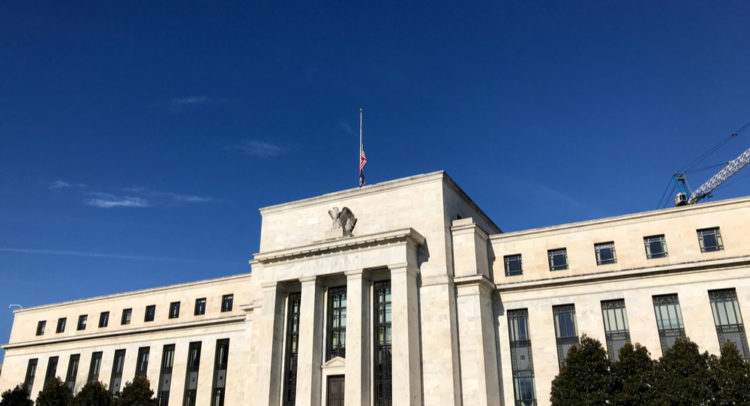The Federal Reserve should prepare markets for tightening, the lifting of short-term interest rates to fight inflation.
Discover the Best Stocks and Maximize Your Portfolio:
- See what stocks are receiving strong buy ratings from top-rated analysts.
- Filter, analyze, and streamline your search for investment opportunities with TipRanks’ Stock Screener.
That wouldn’t be easy, given the market valuations, investor addiction to low-interest rates, and the fears of a stalling recovery. (See Insiders’ Hot Stocks on TipRanks)
Inflation Is Turning Permanent
For over a year, financial markets subscribed to the Fed’s theory that soaring commodity prices is a temporary phenomenon caused by the slow response of the supply side of the commodity market to a sharp pick-up of the demand side due to the opening up the world economies.
This theory has been challenged in recent months as commodity prices continued to soar. For instance, retail inflation rose at an annual increase of 6.2% in October, the highest since November 1990, and ahead of market forecasts of 5.8%. Wholesale inflation stayed at 8.6% in October, the same as in September, and the highest since November 2010.
The persistently high inflation for a long time means that the old villain of the American economy is turning from a temporary to a permanent problem, requiring decisive action by the nation’s central bank to fight it.
Tapering isn’t Enough
Already, the Fed has announced that it will begin to taper its bond-buying program at the end of November, slowing down the pace it puts money in the economy.
That isn’t enough to fight inflation numbers north of 6%, three times its official target. It needs more drastic action, like tightening, taking money out of the economy. That would undoubtedly slow down the demand for commodities and eventually bring inflation down, but it won’t be easy.
Preparing Markets for Tightening Won’t be Easy
While cutting interest rates is an easy thing to do, raising interest rates isn’t. They increase the cost of money, make investing in risky assets less appealing, and often cause sudden corrections when valuations are overextended, and investors are addicted to cheap money. That’s why it’s hard for the Fed to prepare markets for tightening.
Compounding the Fed’s problem is that the U.S. economy shows signs of stagflation, a situation of high inflation combined with an economic slowdown. That’s evidenced by Friday’s Michigan Consumer Sentiment report, which showed a significant decline in consumer sentiment, and the Michigan inflation expectations, which remained elevated.
The Bottom Line
Preparing markets for tapering in the face of stagflation was a tough job. Preparing them for tightening would be even more challenging.
Disclaimer: The information contained in this article represents the views and opinion of the writer only, and not the views or opinion of TipRanks or its affiliates, and should be considered for informational purposes only. TipRanks makes no warranties about the completeness, accuracy or reliability of such information. Nothing in this article should be taken as a recommendation or solicitation to purchase or sell securities. Nothing in the article constitutes legal, professional, investment and/or financial advice and/or takes into account the specific needs and/or requirements of an individual, nor does any information in the article constitute a comprehensive or complete statement of the matters or subject discussed therein. TipRanks and its affiliates disclaim all liability or responsibility with respect to the content of the article, and any action taken upon the information in the article is at your own and sole risk. The link to this article does not constitute an endorsement or recommendation by TipRanks or its affiliates. Past performance is not indicative of future results, prices or performance.









